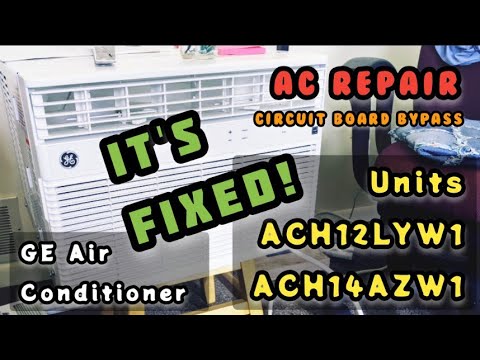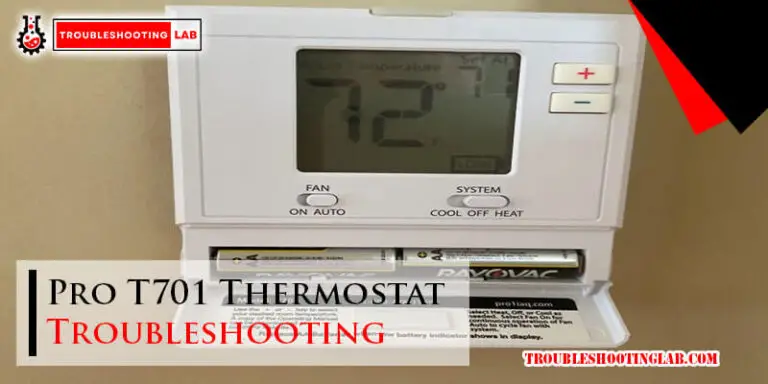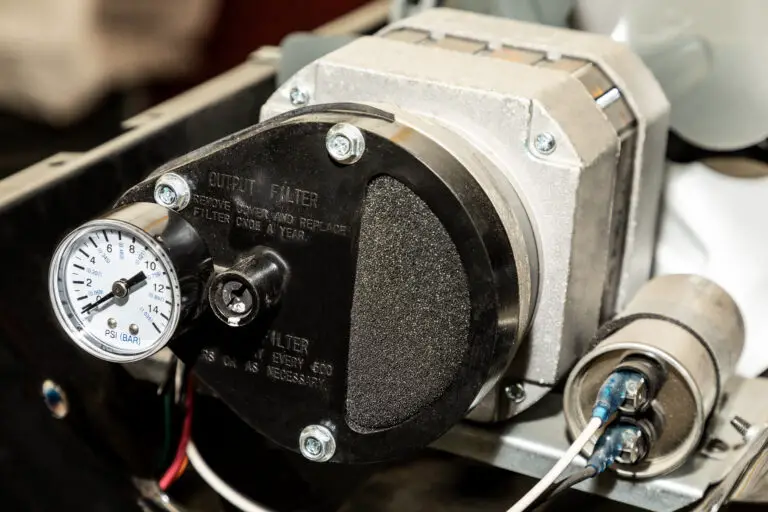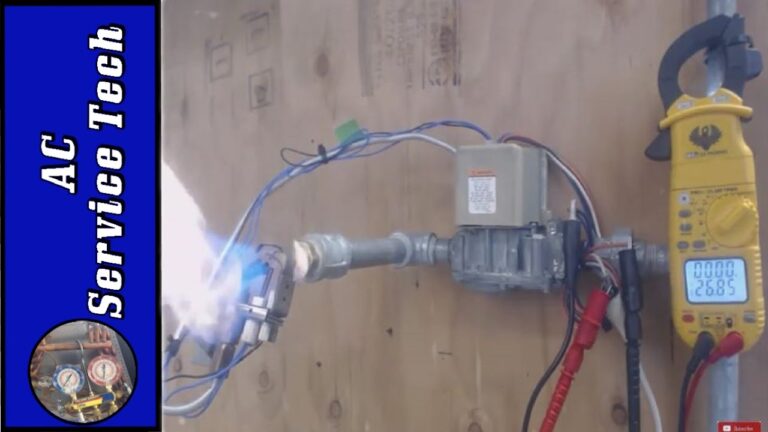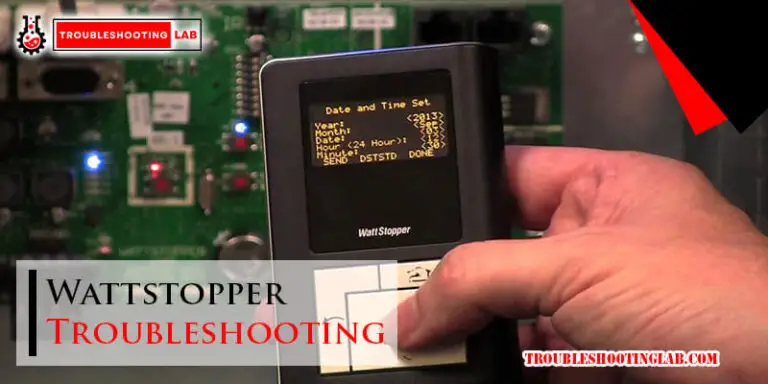Coleman Mobile Home Furnace Troubleshooting: Expert Tips
Is your Coleman mobile home furnace giving you trouble? Don’t worry—you’re not alone.
When the temperature drops, the last thing you want is a furnace that won’t do its job. But before you start stressing or dialing up a costly repair service, know this: many furnace issues can be fixed right at home with a little troubleshooting.
In this guide, we’ll walk you through common problems, step-by-step solutions, and tips to get your furnace running again. Whether it’s a strange noise, weak airflow, or no heat at all, we’ve got you covered. Stick around, because understanding what’s wrong could save you time, money, and frustration. Your comfort is worth it—let’s figure this out together!
Common Furnace Issues
Dealing with furnace issues can be frustrating, especially during cold months. Coleman mobile home furnaces are reliable, but problems can arise. Identifying common issues early can save time and money. Below are some frequent furnace problems and tips to troubleshoot them.
Furnace Not Turning On
This is one of the most common furnace problems. First, check the thermostat settings. Ensure it is set to “heat” and the temperature is higher than the room temperature. Inspect the power supply to confirm the furnace is plugged in and the breaker hasn’t tripped. A dirty or clogged air filter can also prevent the furnace from turning on. Replacing the filter might fix the issue. If none of these work, the problem could be with the ignition system or internal components.
Insufficient Heat Output
If your furnace runs but doesn’t heat properly, check the air filter. A dirty filter can restrict airflow, reducing heat output. Ensure all vents are open and unobstructed. Closed or blocked vents can limit warm air circulation. Low thermostat settings or a malfunctioning thermostat can also cause this issue. If the problem persists, there could be an issue with the blower motor or heat exchanger.
Unusual Noises During Operation
Strange noises from your furnace often indicate a mechanical problem. Rattling sounds might mean loose panels or screws. Squealing noises may suggest issues with the blower belt or motor. A banging sound could signal delayed ignition or ductwork expansion. Regular maintenance and tightening loose parts can prevent these noises. If the problem continues, consult a professional to inspect the unit.
Frequent Cycling On And Off
Short cycling can strain your furnace and reduce its lifespan. This issue often occurs due to a dirty air filter, which causes overheating. Cleaning or replacing the filter can help. Another reason could be an oversized furnace that heats the home too quickly. A malfunctioning thermostat or electrical issue could also trigger frequent cycling. Addressing these issues promptly can prevent further damage to the system.

Credit: www.youtube.com
Inspecting Power Supply
The power supply is essential for your Coleman mobile home furnace. If the furnace isn’t working, inspecting the power supply is the first step. Many issues stem from power interruptions or improper connections. By carefully checking this, you can often identify the problem.
Below are three areas to focus on during your inspection. These steps can help you ensure the furnace receives adequate power and functions correctly.
Checking Circuit Breakers
Start by examining the circuit breakers in your electrical panel. Look for any tripped breakers that may have cut power to the furnace. Reset the breaker if it is off. If the breaker trips again, this might indicate an electrical fault. Consult an expert for further diagnostics.
Ensure the electrical panel is free of moisture or corrosion. These can interfere with the breaker’s operation. Regular checks help prevent future power issues.
Testing The Thermostat
The thermostat controls the furnace operation. Ensure it has power and the batteries are working. Test the thermostat by setting it to a temperature higher than the current room temperature. Listen for a click, which signals the furnace to start.
Check the thermostat’s settings to ensure it is in heat mode. Sometimes incorrect settings lead to power supply issues. Replace the thermostat if it fails to respond after testing.
Ensuring Proper Wiring Connections
Inspect all wiring connections leading to the furnace. Loose or disconnected wires can interrupt power flow. Tighten loose connections and replace damaged wires. Look for frayed or exposed wires, which may pose safety risks.
Verify that the wires are connected to the correct terminals. Incorrect connections can prevent the furnace from operating. Use a wiring diagram for your furnace model to double-check the setup.
Airflow Problems
Airflow problems are common issues in Coleman mobile home furnaces. Poor airflow can reduce heating efficiency and increase energy costs. Several factors can block or disrupt airflow, leading to uneven heating. Diagnosing these issues early can prevent larger problems from developing. Below are common causes and troubleshooting tips for airflow problems.
Blocked Air Filters
Dirty or clogged air filters restrict airflow in your furnace. This forces the system to work harder and reduces its efficiency. Inspect the air filter regularly for dust and debris. Replace it every 1 to 3 months, depending on usage. A clean filter improves airflow and keeps your furnace running smoothly. Always use the correct size and type of filter for your system.
Inspecting Vents And Ducts
Blocked vents or ducts can disrupt warm air circulation in your home. Check all vents to ensure they are open and free from obstructions. Look for furniture, curtains, or objects blocking the airflow. Inspect ducts for visible damage, such as holes or disconnected sections. Seal any leaks with duct tape or a sealant to prevent air loss. Clean ducts to remove dirt, dust, or debris that may block airflow.
Fan Motor Malfunctions
The fan motor plays a crucial role in circulating air. A malfunctioning fan motor can reduce airflow significantly. Listen for unusual noises, such as grinding or squealing, which may indicate a problem. Check if the fan blades are spinning properly. Ensure the motor receives adequate power and inspect for loose connections. If the motor is defective, it may need professional repair or replacement.
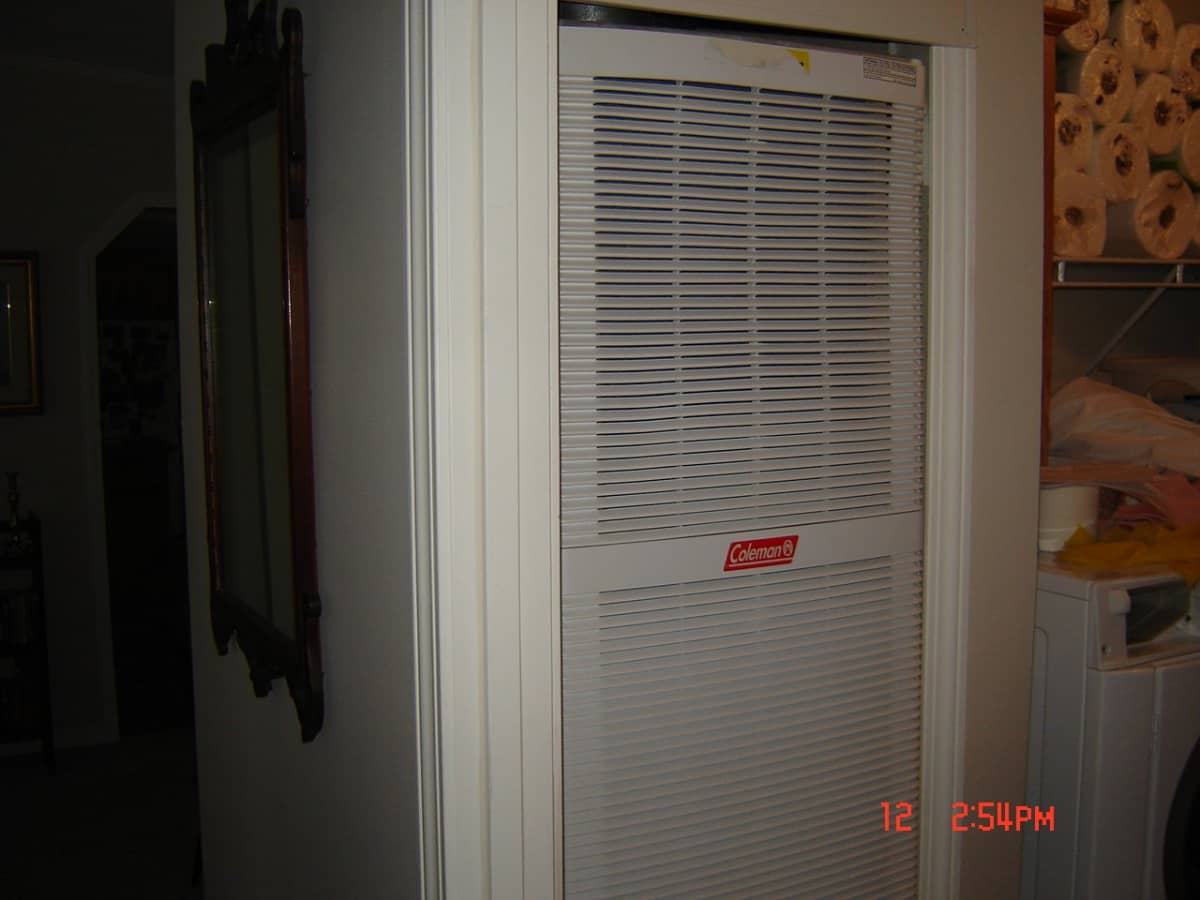
Credit: discover.hubpages.com
Pilot Light And Ignition Issues
Dealing with pilot light and ignition problems in your Coleman mobile home furnace can be frustrating, especially when temperatures drop. These issues often prevent your furnace from heating your home effectively. The good news is, with a little troubleshooting, you can resolve many of these problems yourself before calling a professional.
Relighting The Pilot Light
If your furnace isn’t heating, the first thing you should check is whether the pilot light is out. This small flame is essential for igniting the burners and keeping the heat flowing. To relight it, locate the pilot light assembly, typically near the bottom of your furnace.
Turn the gas valve to the “off” position and wait five minutes to let any residual gas clear. Then, switch it to “pilot” and hold down the reset button while using a lighter or match to ignite the flame. Once the flame is steady, release the reset button and set the valve to “on.” Does the flame keep going out? This could signal a problem with the thermocouple, a part that senses whether the pilot light is lit.
Diagnosing Igniter Failures
If your furnace uses an electronic igniter instead of a pilot light, a faulty igniter might be the issue. Electronic igniters wear out over time or can get damaged if exposed to dirt or moisture. Check for visible cracks or buildup on the igniter surface.
You can test the igniter with a multimeter if you have one handy. A working igniter should show continuity—if it doesn’t, it’s time for a replacement. When replacing, make sure to choose an igniter compatible with your Coleman furnace model to avoid further complications.
Checking Gas Supply
A disrupted gas supply can also cause pilot light and ignition issues. First, confirm that the gas valve to your furnace is open. This is a simple but often overlooked step.
If the valve is open but the furnace isn’t receiving gas, check other gas appliances in your home to see if they’re functioning. If they’re not, you might be dealing with a larger gas line issue that requires your utility company’s attention. Always ensure you handle gas-related troubleshooting with caution for safety.
Troubleshooting pilot light and ignition issues might seem daunting at first, but tackling them step-by-step can make the process manageable. Have you ever fixed your furnace on your own? Share your tips or challenges in the comments below!
Safety Features And Sensors
Ensuring your Coleman mobile home furnace operates safely is crucial for your comfort and peace of mind. Modern furnaces are equipped with advanced safety features and sensors designed to prevent accidents and maintain efficiency. Understanding how these components work and troubleshooting them when issues arise can save you time, money, and unnecessary stress.
Resetting The Limit Switch
The limit switch is a vital safety feature. It monitors the furnace temperature and shuts it down if it overheats. If your furnace suddenly stops working, a tripped limit switch could be the reason.
To reset it, locate the switch near the furnace burner. Usually, it’s a small button or dial. Press it gently to reset.
Before resetting, ask yourself: why did it trip? Check your filters for clogs or debris. Dirty filters can restrict airflow, causing the furnace to overheat. Replace them regularly to avoid future issues.
Testing The Flame Sensor
The flame sensor ensures the furnace only operates when there’s a flame present. If your furnace ignites but then shuts off, the sensor might be dirty or faulty.
You can test it using a multimeter or clean it with steel wool. Remove the sensor carefully—it’s a small rod near the burner. Gently scrub it to remove dirt or carbon buildup.
Don’t skip this step. A faulty flame sensor can leave you without heat during cold nights. Have a backup sensor on hand if yours is too worn out.
Addressing Carbon Monoxide Concerns
Carbon monoxide is a silent danger that can leak from a malfunctioning furnace. Your furnace’s sensors and safety features help prevent these leaks, but regular maintenance is essential.
Install a carbon monoxide detector near your furnace. Test it frequently to ensure it’s working properly. If you suspect a leak, turn off the furnace immediately and call a professional.
Take a moment to inspect the furnace exhaust pipe for cracks or damage. A small crack can lead to big problems. Keeping this pipe intact protects you and your family.
Safety features and sensors are your furnace’s lifeline. By resetting the limit switch, testing the flame sensor, and addressing carbon monoxide concerns, you’re not only troubleshooting but also ensuring your home stays safe and warm. Have you checked your furnace’s safety features lately?
Seasonal Maintenance Tips
Regular seasonal maintenance keeps your Coleman mobile home furnace in top shape. A well-maintained furnace ensures efficient heating and reduces unexpected breakdowns. Follow these tips to extend the life of your furnace and maintain its performance.
Cleaning The Furnace Components
Dust and debris can clog your furnace components over time. Start by turning off the power to the furnace for safety. Use a soft brush or vacuum to clean the blower motor, fan blades, and burners. Check the air filter and replace it if it’s dirty. A clean furnace runs more efficiently and heats your home better.
Inspecting For Wear And Tear
Inspect the furnace for signs of wear or damage. Look for cracks in the heat exchanger or loose wires in the electrical connections. Examine the belts for fraying or damage. Replace worn parts immediately to prevent bigger issues later. Regular checks help catch problems early and save money on repairs.
Scheduling Professional Inspections
Hire a qualified technician to inspect your furnace at least once a year. Professionals can identify hidden problems and ensure all parts are functioning well. They can also test the safety controls and adjust the thermostat for better performance. Professional inspections provide peace of mind during cold months.
When To Call A Professional
Some furnace issues need a trained professional to handle safely. Knowing when to make that call can save time and prevent bigger problems. While homeowners can troubleshoot minor issues, complex repairs often require expertise and equipment.
Identifying Complex Repairs
Complex repairs often involve electrical components or gas connections. These systems can be dangerous for untrained individuals. If you notice frequent tripping of circuit breakers or strange noises, it may indicate a deeper problem. Unusual smells, like gas or burning odors, are also warning signs. Attempting to fix these issues yourself can lead to safety risks or further damage.
Another sign of complexity is inconsistent heating throughout your home. If some rooms stay cold despite adjusting settings, the furnace may have a malfunction. Professionals can pinpoint the exact cause and ensure proper repair. Always prioritize safety when dealing with advanced furnace issues.
Signs Of System Replacement
Repeated breakdowns are often a sign that your furnace is aging. If repair costs keep rising, it might be time for a replacement. A furnace nearing 15-20 years old is less efficient and can struggle to heat your home. Higher energy bills and frequent repairs signal that the system is no longer optimal.
If your furnace no longer heats adequately, consider consulting a technician for advice. They can assess whether repairs are worth it or if replacement is better. Upgrading to a newer model can improve efficiency and reliability over time.
Finding A Certified Technician
Choosing a certified technician ensures the job is done correctly. Look for professionals with experience working on Coleman mobile home furnaces. Certification guarantees they are trained to handle specific furnace models and systems.
Ask for references or read reviews to confirm their reliability. A trustworthy technician will provide clear pricing and explain necessary repairs before starting work. This transparency helps avoid surprises and ensures your furnace is in good hands.
Always choose technicians familiar with mobile home heating systems. These units often have unique requirements compared to standard home furnaces. Hiring the right expert ensures your furnace operates safely and efficiently.
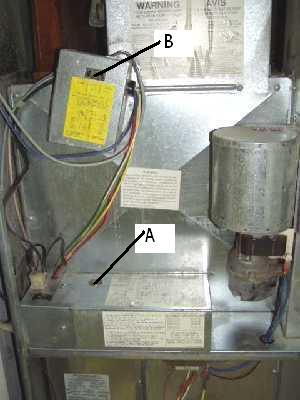
Credit: www.mobilehomerepair.com
Conclusion
Troubleshooting your Coleman mobile home furnace doesn’t have to feel overwhelming. Start with simple checks like filters, power, and thermostat settings. Regular maintenance can prevent many common problems and keep your furnace running. Always prioritize safety and turn off power before inspecting any parts.
For complex issues, contacting a professional technician is the best choice. Proper care ensures warmth and comfort for your home during colder months. Use this guide to address minor issues and maintain your furnace effectively. A little effort now can save you time and stress later.
Keep your furnace in good shape for reliable performance.

